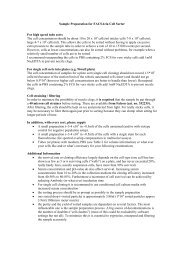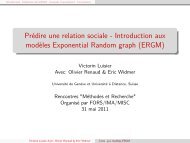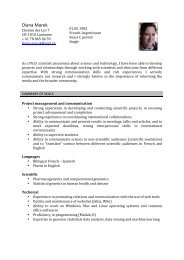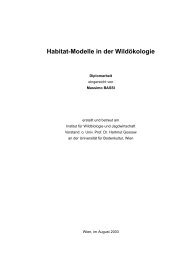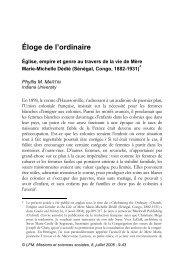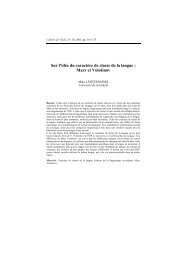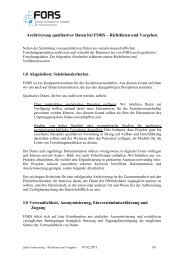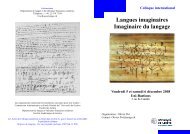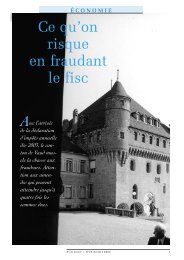conference programme book - European Survey Research ...
conference programme book - European Survey Research ...
conference programme book - European Survey Research ...
You also want an ePaper? Increase the reach of your titles
YUMPU automatically turns print PDFs into web optimized ePapers that Google loves.
100 WEDNESDAY 20 JULYFor the latest edion of the <strong>European</strong> Social <strong>Survey</strong> (Round 5, 2010), for which the fieldwork in Switzerland hasbeen realized between October 2010 and March 2011, the tool for the measurement of the highest educaonallevel aained (for respondent, partner, father and mother) has been revised in order to obtain an up to dateversale tool, with more informave and internaonally beer comparable indicaons. The basis for thisrevision was the <strong>European</strong> <strong>Survey</strong> Version of ISCED proposed by Silke Schneider (2009).2.34.3 The Internaonal Standard Level of Educaon (ISLED): Scaling and validang the ESS educaoncategoriesH. Schröder 1 , H. Ganzeboom 11 Vrije Universiteit Amsterdam, NetherlandsWe propose a novel way of improving the measurement of educaon level in cross-naonal research by opmallyscaling the detailed country-specific educaonal classificaons available in the ESS. Applying cause-andeffect-proporonal scaling, we esmate how the respecve naonal educaon levels are located relave toeach other with regard to a number of inputs (parental educaon and occupaon levels) and a number ofoutputs (occupaonal aainment and educaon partner). We label the thus derived measure ISLED. We findthat the increase in detail achieved by opmal scaling yields a noceably beer measurement of educaonlevel relave to both ISCED representaon and the duraon measure of educaon level. Both are present inthe ESS data.2.34.4 How to Model Parental Educaon Effects on Men and Women´s Aainment? Cross-naonal Assessmentsof Different ApproachesI. Tomescu-Dubrow 1 , H. Domanski 11 Polish Academy of Sciences, Poland<strong>Research</strong> in social straficaon shares the assumpon that social origin operates through assets embeddedin the family structure, yet scholars’ opinions of how resources get transmied intergeneraonally vary significantly.The result of this variaon in opinions is a range of measures for family background, and disnctempirical models. A simplified schema yields three main methodological approaches: (a) one parent’s characteriscsmodels; (b) models using characteriscs of both parents; and (c) models accounng for specificeffects of social origin depending on gender. In this paper we analyze how models of each type perform whenapplied to cross-naonal data from the <strong>European</strong> Social <strong>Survey</strong> (Round 3). We focus on the impact of parentaleducaon on children’s success, while controlling for parents’ social class posion...2.35 Pioneering <strong>Survey</strong> Translaon: Froner research in quesonnaire translaonand mullingual measurement instruments IITo be held on July 20, 2011 from: 14:00 to 15:30, in room 303.Coordinated by:• Dorothée Behr - GESIS - Leibniz Instute for the Social Sciences, Germany• Brita Dorer - GESIS - Leibniz Instute for the Social Sciences, Germany2.35.1 Quality Management in Translaon of Measurement Instruments: Lessons Learnt from Large-scale<strong>Survey</strong>sB. Upsing 2 , H. ROELKE 3 , L. Wäyrynen 1 , S. Dept 11 cApStAn Linguisc Quality Control, Belgium; 2 TBA - Deutsches Instut fuer Internaonale PaedagogischeForschung, Germany; 3 TBA-DIPF, GermanyQuality Management in Translaon of Measurement Instruments: Lessons Learnt from Large-scale <strong>Survey</strong>s



